Este post também está disponível em:
Português
English
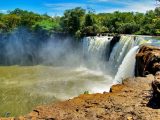
The Chapada das Mesas National Park has sandstone geographic formations, about 70 million years old and that can reach around 400 metres high and is extremely exuberant with its mountains, waterfalls, rivers and lakes that jump to our eyes and provide an incredible experience.
The Chapada das Mesas is one of the 5 main chapadas in Brazil.
Chapada das Mesas is located in the south of Maranhão, on the border with Tocantins.
About 860 kilometres from the capital São Luís and located on the banks of the Tocantins River, the Chapada das Mesas National Park was created in 2005 to preserve the biodiversity of the Brazilian biomes of Cerrado, Caatinga and Amazon.
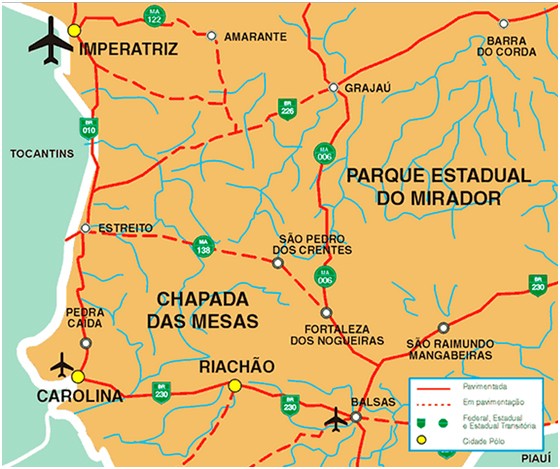
The Chapada das Mesas region is divided by four cities in the centre-south of Maranhão: Carolina (border with Tocantins), Riachão, Estreito and Imperatriz.
Among the tourist activities on offer are abseiling and ecological trails where visitors can also visit the region’s natural pools of crystal-clear water. One of the most visited waterfalls is that of São Romão, with a 26-metre waterfall.
On the spot, those who arrive can see scenery integrated with landscapes of the sertão, waterfalls, mountains, buritizais forests, canyons, and lakes worthy of an adventurous experience.
The name Chapada is due to the rock formations sculpted by the action of wind and rain that resemble tables.
The place has 160 thousand hectares of area that can be contemplated in the Moon Tower, located in the municipality of Carolina, one of the gateways to the region.
In addition to the Tower, the chapada has other attractions: adventure with abseiling and canyoning in the waters; learning at Morro das Figuras, where walls are adorned with cave paintings; or observation of endemic birds.
For relaxation, the best option is a bath in the crystal-clear waters of Poço Azul or in the waterfalls of the region.
Waterfalls, in fact, are not lacking.
The Cachoeira do Santuário, for example, is 50 metres high; São Romão stands out as the largest in Maranhão in terms of water volume; and Santa Bárbara, with more than 70 metres, is known for housing a rock formation that resembles the image of the saint.
Those who prefer to walk can choose from numerous trails in the middle of the forest.
The routes offer contact with wildlife and wild animals such as monkeys, anacondas, macaws and owls.
For this very reason and to better enjoy all the attractions, it is recommended to hire a specialised travel agency service with a tour guide.
To get to know all the beauties of Chapada das Mesas, the suggestion is to stay at least four days in the region.
Access to the park can be made by the BR-010 and BR-230 highways from the Maranhão municipalities of Estreito, Riachão, Carolina and Imperatriz.
Video Chapada das Mesas National Park
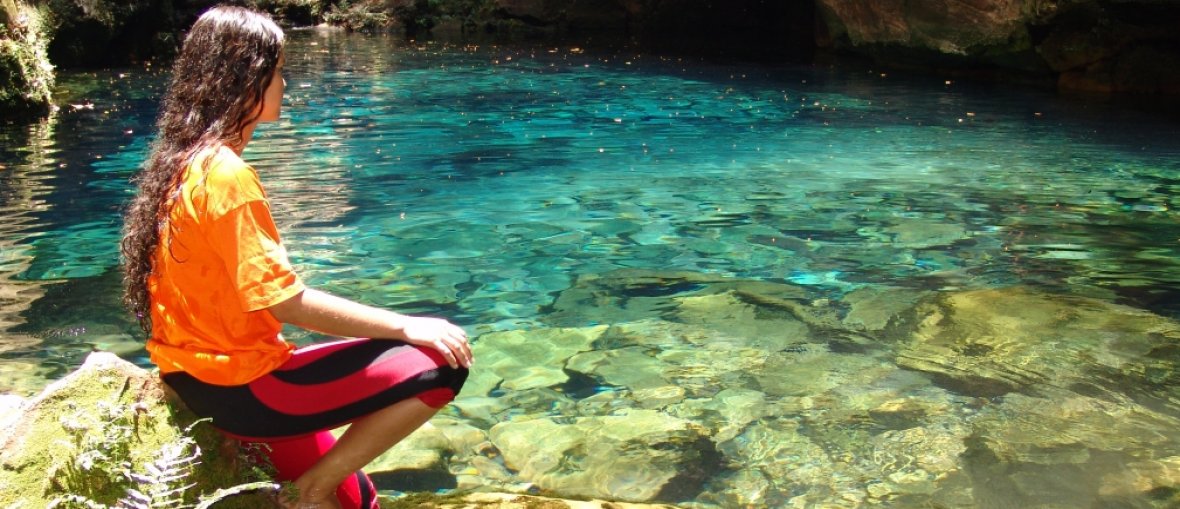

Complexo Turístico Pedra Caida
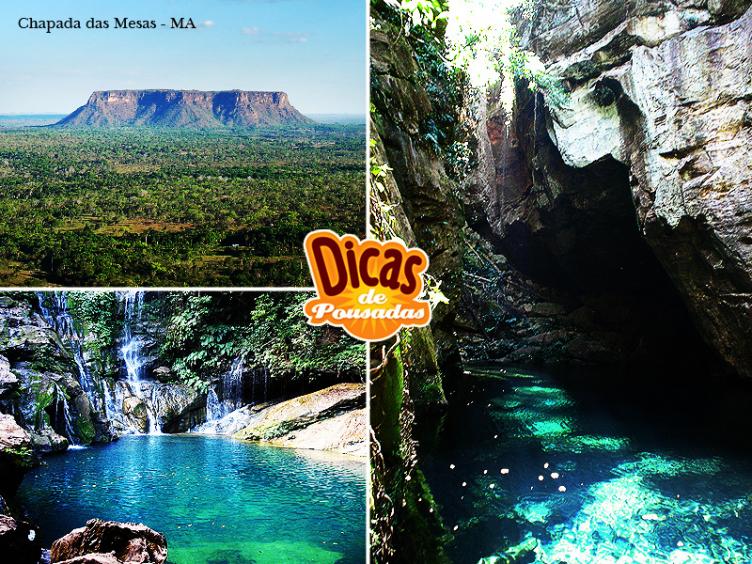
Chapada das Mesas - Reportagem
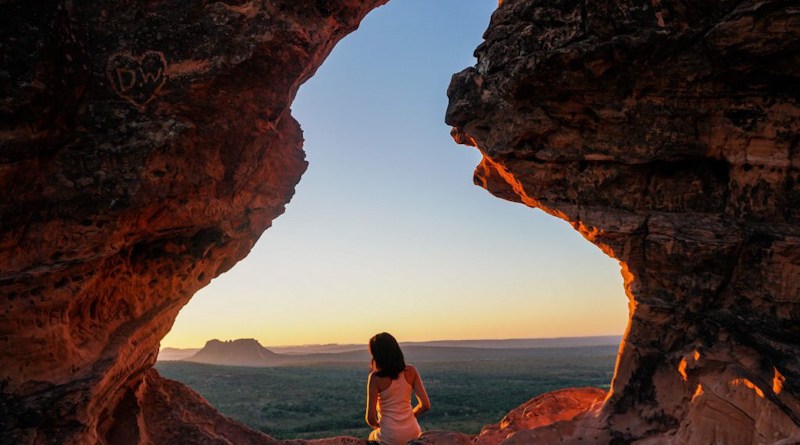
Chapada das Mesas - O que fazer - Parte 1
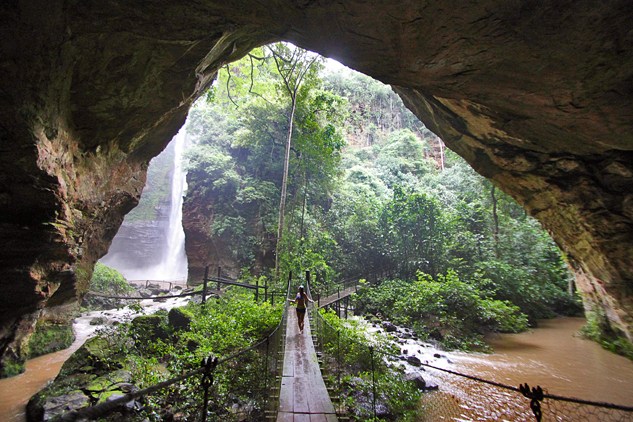
Chapada das Mesas - O que fazer - Parte 206:49
Tourist Spots of Chapada das Mesas
Chapada das Mesas mixes 3 different biomes: Amazon, Cerrado and Caatinga.
The main attractions are: Encanto Azul, Poço Azul, Cachoeira Santa Bárbara, Cachoeira São Romão, Cachoeira Prata, Cachoeira do Capelão and the Cave.
Those who want to visit the waterfalls, the tip is to go between December and April. Those who want to practice more extreme sports, such as mountain biking and trekking, should opt for the dry season, between May and September.
The nearest city is the beautiful Carolina, located in the south of Maranhão and on the banks of the Tocantins River.
Tourist Complex Pedra Caida
36 km from Carolina, is the ecological sanctuary of Pedra Caída, a complex that has a variety of waterfalls, the main one of which plummets from a height of 46 metres.
The place offers possibilities to practice various extreme sports from the lightest to the heaviest, such as rides in traced vehicles, hiking, rappelling and zip-lining, remembering that Pedra Caída is one of the highest and longest in the country, reaching 1,400 metres in length and about 300 metres in height.
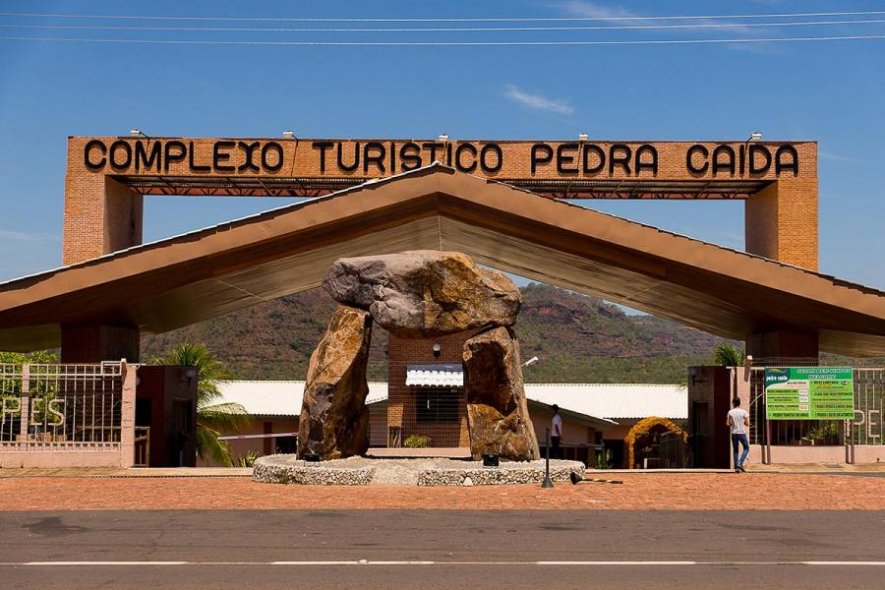
Complexo Turístico Pedra Caida
The complex also offers a structure of chalets and restaurants.
Pedra Caida Tourist Complex is 6 km from the entrance to the Chapada das Mesas National Park.
There are 12,600 hectares destined exclusively for ecotourism and adventure tourism. Here, you’ll find 25 waterfalls, but the main one is the 46-metre high Cachoeira do Santuário.
To reach it, I walk 600 metres along suspended walkways and ramps.
I also cross about 50 metres inside the Sanctuary Canyon with water up to my waist.
The waterfall is hidden by the canyon walls and the sound of the waterfall is my only reference. However, when I arrive in front of it, I see that it was worth all the effort to be here.
The pool that forms at the base of the waterfall is 1.5 metres deep, on average, and a thick cloud of water spreads through the air all the time. So don’t complain if you can’t get that perfect shot.
Be sure to stop by the Sanctuary lookout, a suspension bridge that is also called Pedro’s Bridge.
Pedra Caída Waterfalls
Only seven of the 25 waterfalls in the Pedra Caída Complex can be visited.
The others are far away and are not yet accessible. In addition to the Sanctuary Waterfall, I visited the Capelão and the Caverna.
The Cave Cave is six kilometres from the Pedra Caída headquarters.
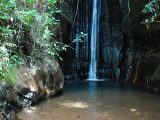
This route can be done by car, but you have to walk another 400 metres on suspended walkways and another 30 metres with waist-high water to cross the cave and reach the waterfall.
Here, you can pass behind the waterfall and even relax while it gives you a massage.
Three kilometres away from Cachoeira da Caverna is Cachoeira do Capelão.
It is 22 metres high and the pool of water dyed in shades of blue that forms at its feet reaches a depth of 4.5 metres. To reach it you have to take a short walk through a stream with water in the shin.
The waterfall is named after a pair of capuchin monkeys that live nearby.
Garrote Waterfall is 13 kilometres from the Complex’s headquarters and can be reached by car.
Pedra furada Waterfall and Lua Waterfall are 1,700 metres away and the route is made by walking along footbridges.
The Brilho Waterfall is a three-kilometre walk away – this is the only one that does not have a suspended walkway – and, therefore, you need to be more careful, as the trail has great variation in relief.
Here, one of the great attractions is to contemplate the 12-metre wall and the virgin forest that surrounds it.
Riachão
In the southwest of Maranhão, the city of Riachão is synonymous with adventure.
The city of Riachão is 140 km from Carolina and does not offer a good structure for tourists.
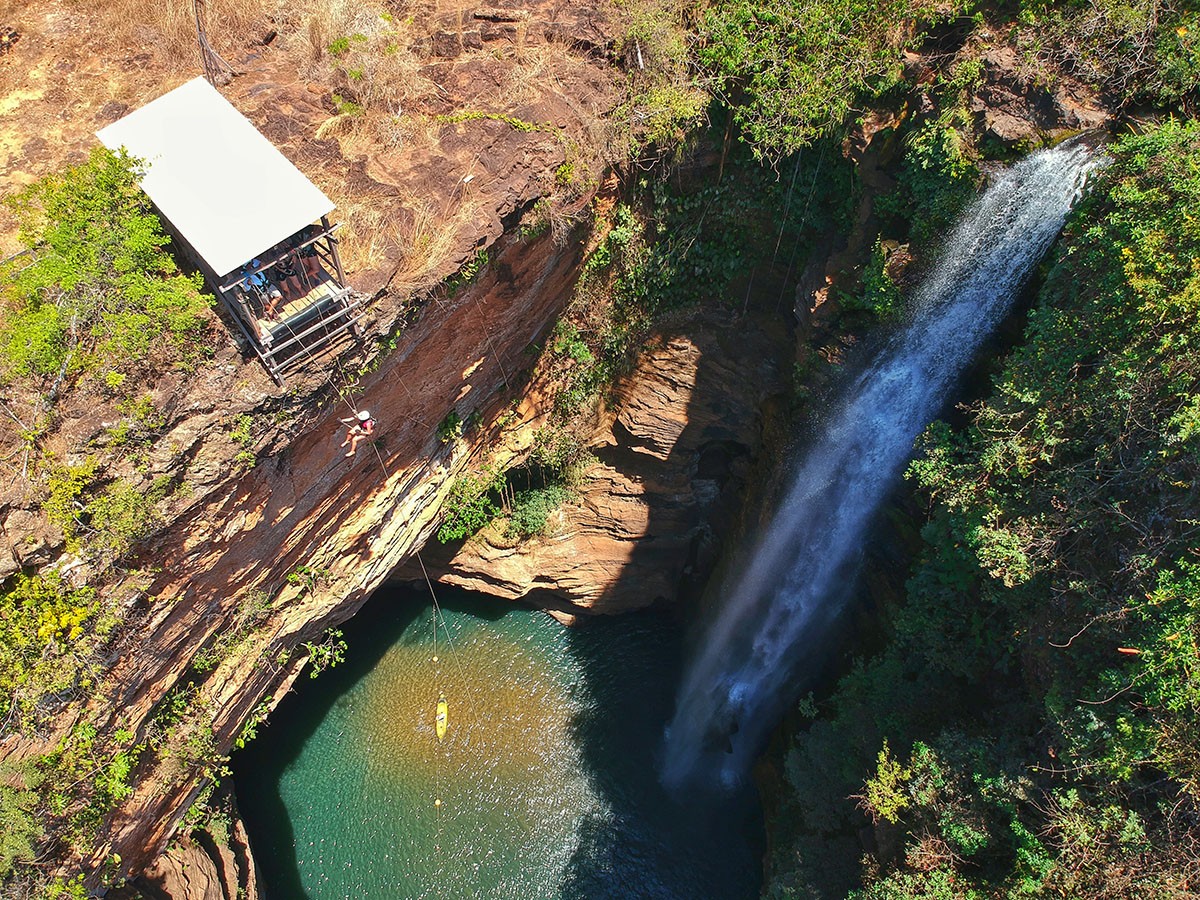
The city receives tourists thanks to the Poço Azul complex, which houses the three most beautiful attractions of Chapada das Mesas: the Santa Bárbara Waterfall, the Poço Azul and the Encanto Azul, an incredible well of crystalline waters formed between the rocks of the region.

Full of waterfalls, rivers, trails and canyons, the region offers opportunities for everyone to exercise and get in harmonious and exciting contact with nature.
The options are diverse. From a simple walk, to zip-lining and abseiling. But the greatest adventure is discovering this paradise.
Poço Azul, Encanto Azul and Cachoeira Santa Bárbara
The two wells with crystal clear waters and surrounded by walls of red stones are located in the municipality of Riachão. And underwater there is even more beauty – with a mask and snorkel, you can observe and swim among piaus, lambaris, cascudos…
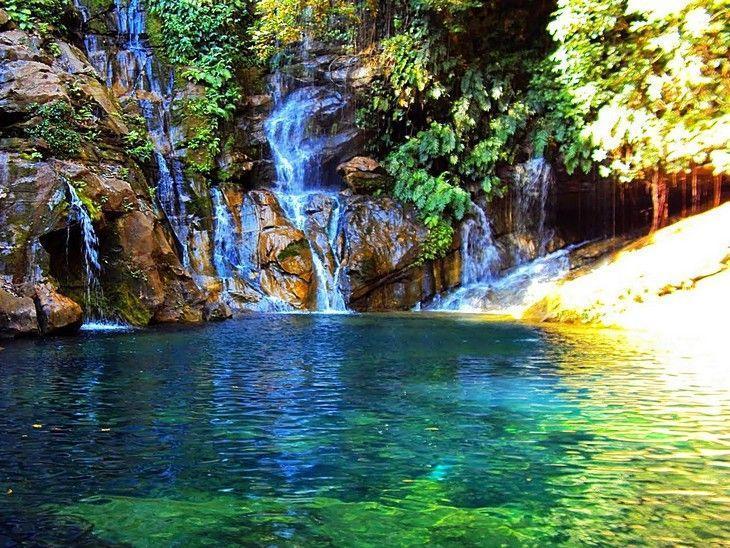
Poço Azul, Encanto Azul e Cachoeira Santa Bárbara
Waterfall formed by the Cocal River, is in the municipality of Riachão and is 76 metres high.
The Santa Bárbara Waterfall was baptised with this name thanks to an eccentric rock formation present in the middle of the waterfall.
Trekking to Morro do Chapéu in Chapada das Mesas
It is important to know that Morro do Chapéu is not exactly inside the Chapada das Mesas National Park.
It is located in what we call a “buffer zone”, that is, a radius of ten kilometres around the Park.
The trekking to Morro do Chapéu is a 365m climb on sandstone rock and therefore requires physical preparation and skill from practitioners.
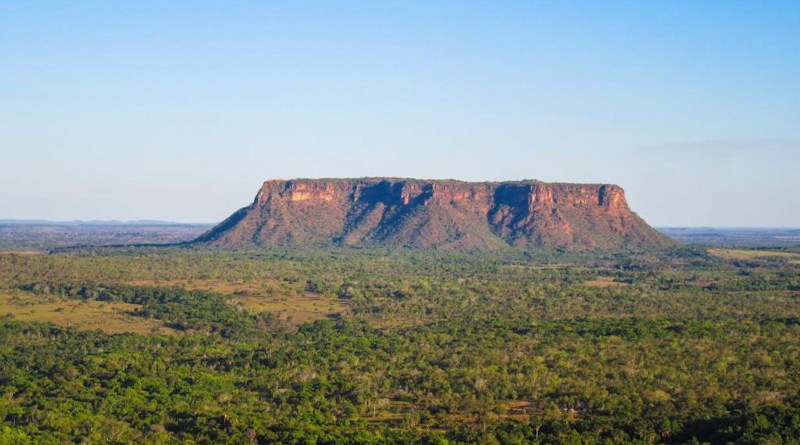
Trilha no Morro do Chapéu - Chapada das Mesas
There are approximately 500 metres of trail up the hill. Of these, about 220 metres are characterised by accumulated elevations – you will need to use your hands in some stretches to support yourself.
It is the highest point of Chapada das Mesas.
This tour is made even more interesting by the mystical legends that surround Morro do Chapéu. They say that the hill was the main point of indigenous rites in the region.
To get to Morro do Chapéu from Carolina, you have to drive 12 kilometres along the BR-230, the famous Transamazonian Highway, and another 12 kilometres on a dirt road with very sandy soil.
The road, overgrown with vegetation, seems to disappear at some points. It is therefore essential to have a tractor.
Chapada das Mesas
Where is it
Almost on the border with Tocantins, in the south-west of Maranhão, the Chapada das Mesas National Park is 840km from the capital São Luís. So far from the capital, Mesas is almost 500km from Palmas and 790km from Teresina.
In other words, Chapada das Mesas is in a very isolated region of Brazil, a transition between the caatinga, the cerrado and already close to the Amazon rainforest. Oh, and also very close to the Tocantins River, from where you have unforgettable sunset views.
How to go
The best way is by plane landing in Imperatriz. From there, you go for another 200km to Carolina, a city on the bank of the Tocantins River and also the gateway to Chapada.
Imperatriz receives direct flights from Brasília, São Luís, Belém, Belo Horizonte and São Paulo. That’s right: those who live in Teresina and Palmas, states geographically closer than all of the above list, need to make a stopover before arriving in the city of Maranhão.
Best time
Between the months of May and September it usually rains less. On the one hand, the waterfalls are not as showy as in the summer months.
On the other hand, bathing is guaranteed, since when it rains there, it usually comes with thick lead. What’s more, with the dry climate and low humidity, winter will force you to cool off. It is also worth remembering that although the temperature drops a little at this time, the waters of the Mesas are usually warmer than other chapadas in Brazil.
Meet the waterfalls of Chapada das Mesas
Chapada das Mesas National Park and Northeast Tourism and Travel Guide



















